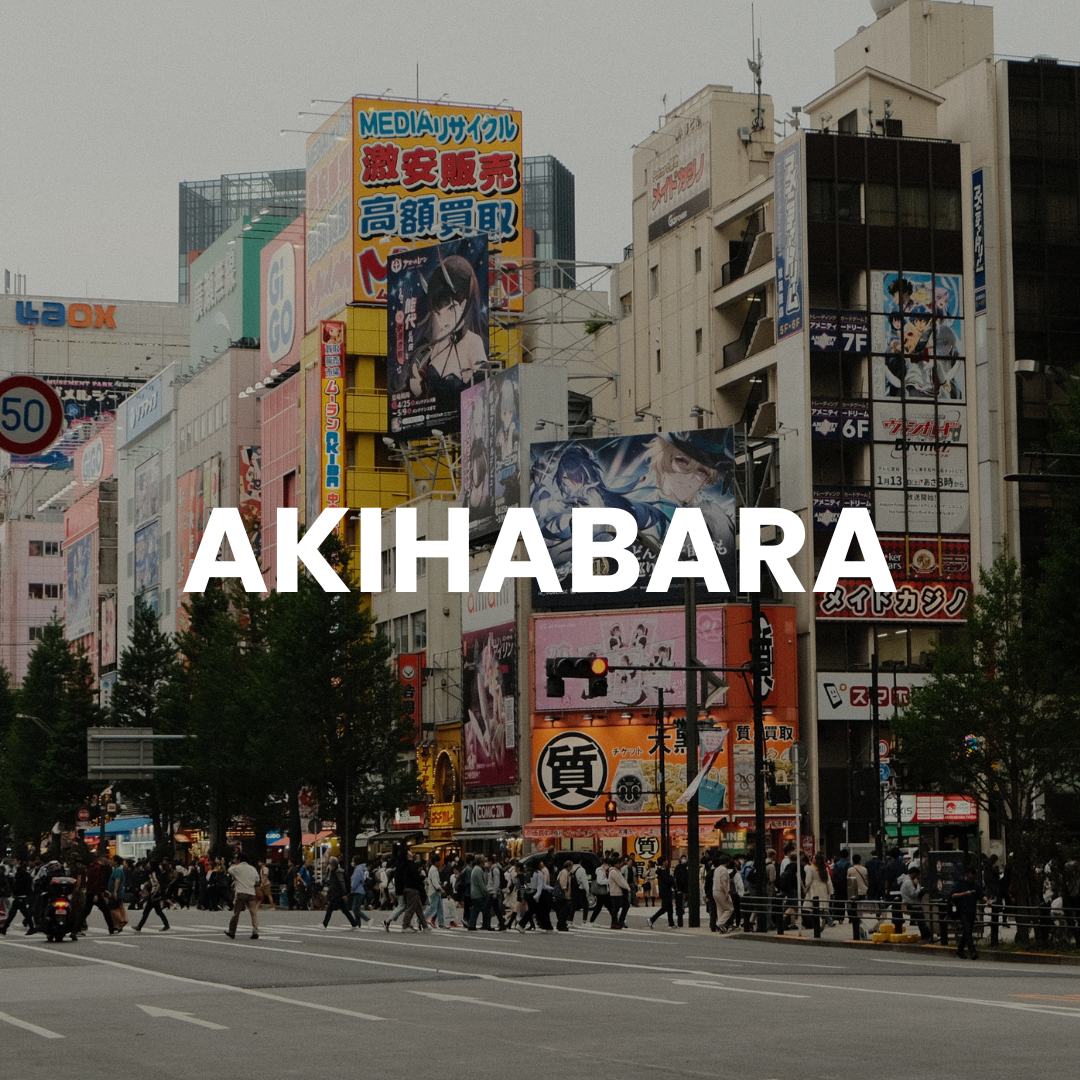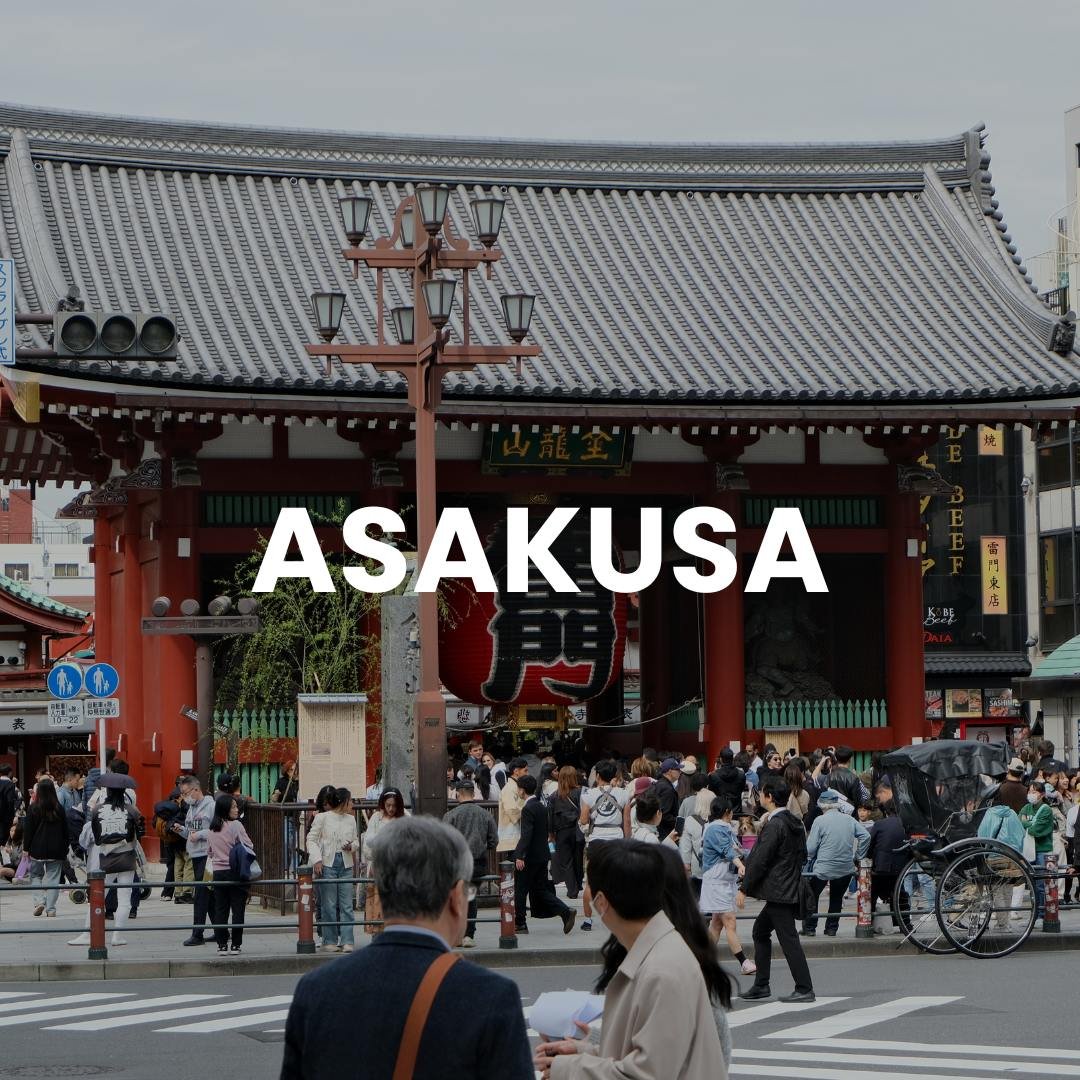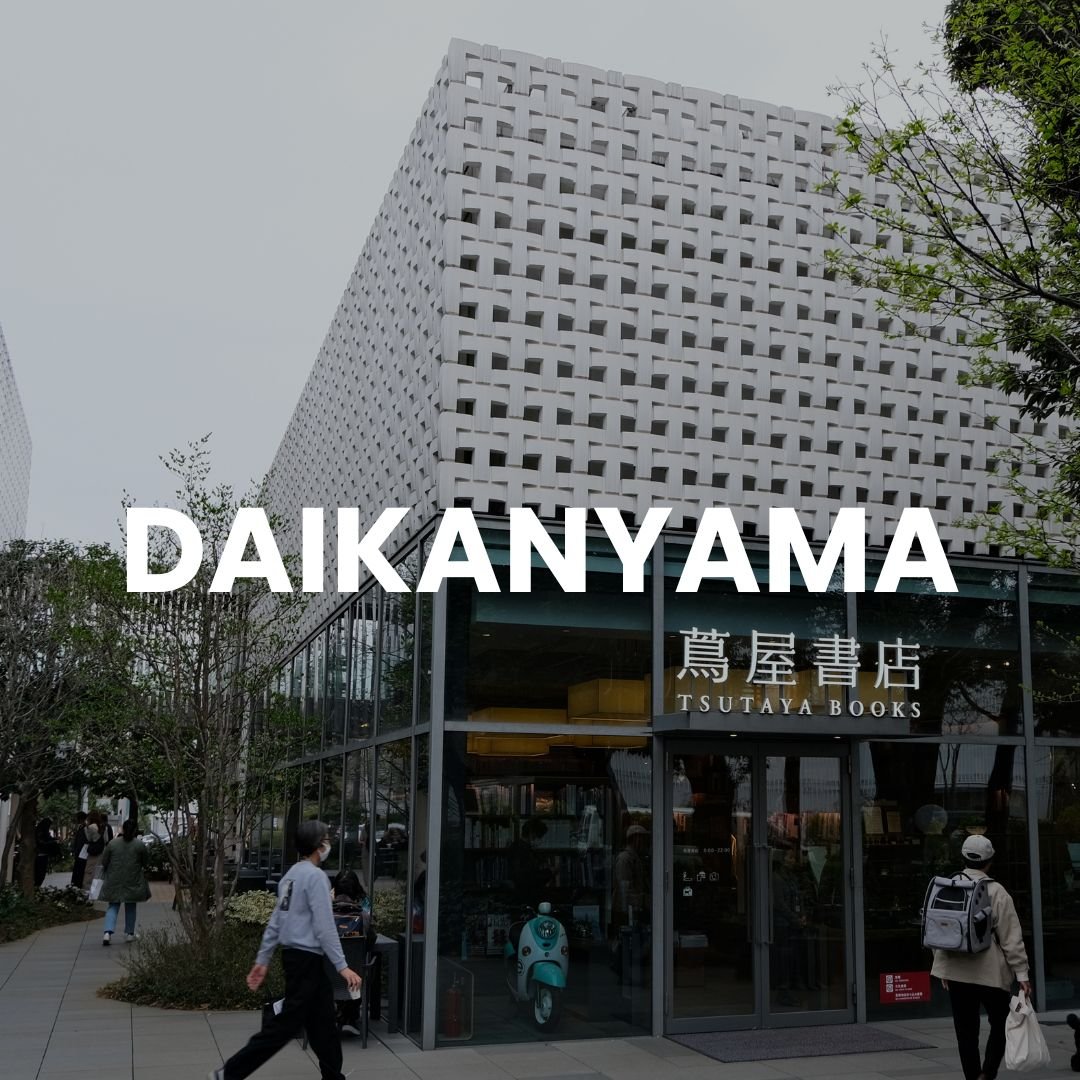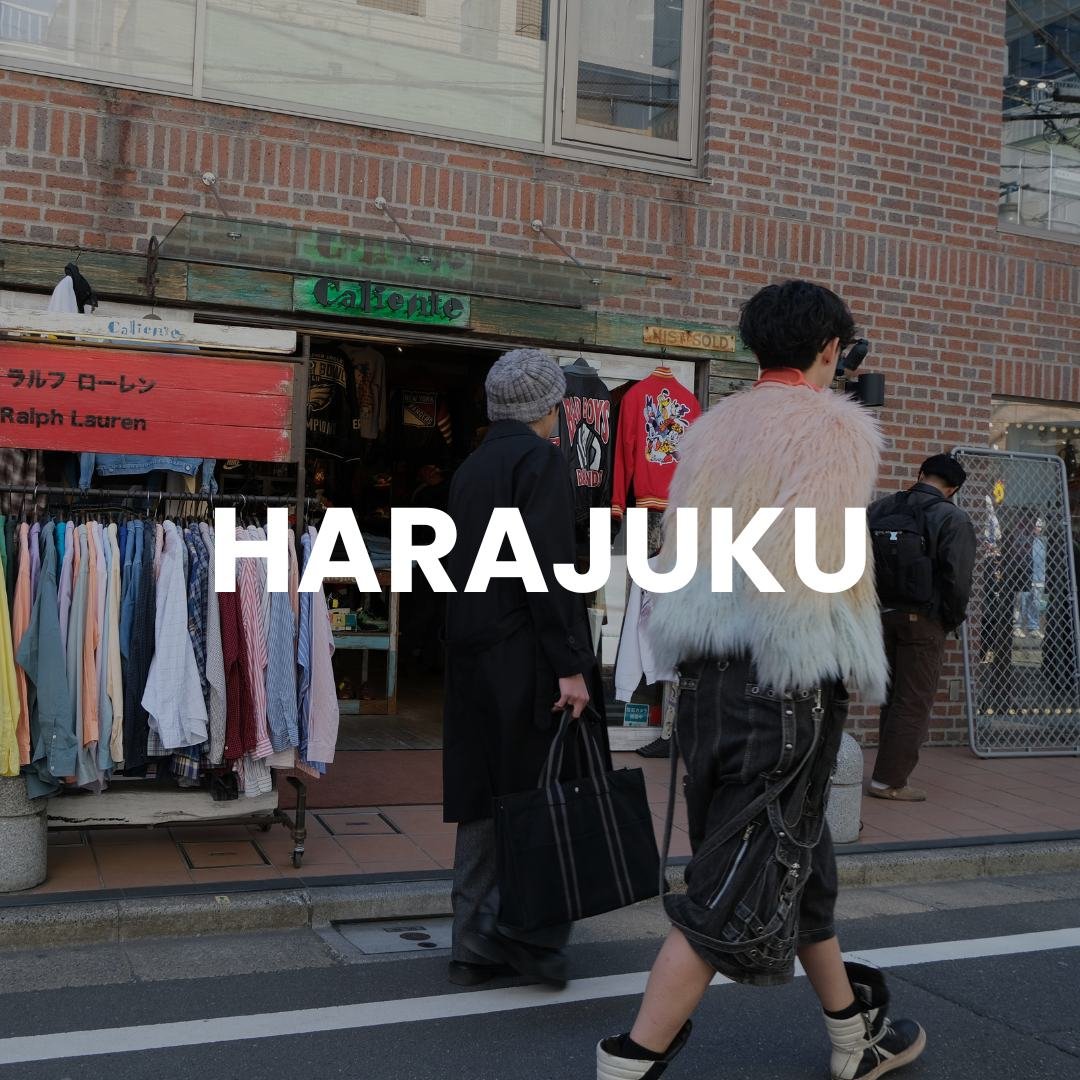Harajuku Guide - Tokyo's Core of Youth Culture and Fashion
2nd hand store Caliente
Nestled between the districts of Shibuya and Shinjuku lies Harajuku, an eclectic neighborhood that serves as the beating heart of Tokyo's youth culture and fashion scene. Stepping out of Harajuku Station onto Takeshita Street, visitors are immediately enveloped in a kaleidoscope of colors, sounds, and styles that define this iconic district.
In this Harajuku Guide
Harajuku’s past & present
Takeshita Street: Once the heartbeat of Harajuku
Beyond Takeshita Street
The food of Harajuku
More than just Fashion
How to get to Harajuku
If you are looking for the best fashion shops in Harajuku, we’ve created a separate guide to help you on your journey.
Find the Guide on the Best clothing shops in Harajuku here.
Rebellious Behavior Harajuku
Harajuku’s past & present
Originally a post town known for its lush meadows, the Harajuku neighborhood has undergone a remarkable transformation over the years, evolving into a global hub of creativity and a beacon for Japanese pop culture and fashion. Today, it stands as a testament to Japan's unique blend of tradition and innovation, known not only as the birthplace of Harajuku fashion style, but as an area where ancient shrines coexist harmoniously with avant-garde fashion boutiques and trendy cafes. Harajuku Shibuya, boasts its distinct identity but is officially part of the Shibuya ward.
One of the defining features of Harajuku is its diverse array of fashion subcultures, each offering a distinct aesthetic and ethos. Harajuku fashion style ranges from the whimsical and adorable kawaii culture to the edgy and rebellious looks of punk and goth, embracing individuality and self-expression in all its forms.
Santa Monica Harajuku
Takeshita Street: Once the heartbeat of Harajuku
Upon exiting Harajuku station, right at the center of Harajuku's fashion frenzy lies Takeshita Street, often referred to as Harajuku Street, a bustling avenue lined with quirky shops, vibrant street food stalls, and a crowd with a mix of stylish locals and curious tourists. Here, visitors can immerse themselves in the latest trends, from oversized rainbow cotton candy to avant-garde streetwear from both local designers and international brands. While Takeshita street is the main entrance to Harajuku, the fun and digging truly begins once you venture further into the district’s alleys.
Takeshita Street Harajuku
Make a quick first stop in a small side alley of Takeshita Street to discover an iconic shop that embodies modern-day Harajuku style, a significant influence on Tokyo's youth. We’re talking about ACDC RAG Harajuku. This extravagant shop with its red facade offers a collection of funky pop-fantasy and goth-style clothing and accessories.
ACDC RAG Harajuku
Beyond Takeshita Street
While Takeshita Street may steal the spotlight, Harajuku’s real value lies in its hidden gems waiting to be discovered. Venturing off the beaten path leads to charming alleyways where boutique shops and cozy cafes beckon with their unique charm, laid-back atmosphere and often carefully curated collections. Have a look at our guide to Harajuku’s best clothing store to get you started in finding the true gems of Harajuku and Jingumae.
The food of Harajuku
Harajuku hosts a great variety of food places. From the abundance of sweet treats on Takeshita street, to the savoury spots hidden a little deeper into the alleys of Tokyo’s fashion district, Harajuku knows how to please its guests. Here are our top four food recommendations in Harajuku.
Sweet Box
The moment you head into Takeshita street you will be bombarded with the smell of crepes and other sweet treats. One of the first places you encounter is Sweet Box, a safe bet for a quick sweet snack.
Sweet Box Harajuku
SYNdicate
If there’s one spot that can’t be missed on your list for a quick coffee and snack break, it’s SYNdicate Harajuku. Located outside of the bustling main street you’ll spot the concrete exterior with a rusty nameplate. Offering a mix of coffee, tea, homemade soft drinks and a wide variety of lunch options, SYNdicate is the perfect spot for a break during your exploration of Harajuku Jingumae.
SYNdicate Harajuku
Oreryu Gyozarou Hanten
For ramen we can recommend Oreryu Gyozarou Hanten. Besides their ramen, you can enjou a little Japanese-Chinese fusion diner. Expect lots of sauce, mapo tofu, karaage, gyoza, and much more.
Oreryu Gyozarou Hanten Harajuku
Waratako
Lastly on the food list we have what is probably the smallest and cutest shop in Harajuku, Waratako. In this small Takoyaki stand you can order a bunch of Takoyaki variations. Be warned, this Takoyaki has a softer texture than you might be used to.
Waratako Harajuku
More than just fashion
Beyond its fashion and culinary offerings, Harajuku is also home to cultural landmarks such as Meiji Shrine and Yoyogi Park, providing tranquil respites from city life. You can stroll through the park’s greenery, and soak in the serene ambiance of these historic sites. In the midst of the Harajuku area you find the Togo Shrine, just a minute from Takeshita street.
Togo Shrine Harajuku
As Harajuku continues to evolve and reinvent itself, it remains a beacon of creativity and innovation, inspiring fashion enthusiasts and cultural aficionados from around the globe. While trends may come and go, the spirit of Harajuku endures, offering a glimpse into the dynamic energy and boundless imagination of Tokyo's youth culture.
FR2MAY Harajuku
Harajuku stands as a testament to Tokyo's vibrant and ever-changing cultural landscape. From its bustling streets and eclectic fashion scene to its rich history and culinary delights, Harajuku captivates the senses and leaves a lasting impression on all who visit. Whether you're a fashion aficionado, a food enthusiast, or simply a curious traveler, a journey through the colorful streets of Harajuku is sure to be an unforgettable experience. So don’t wait any longer to type Harajuku Station Tokyo in Google maps and head towards Tokyo’s most colorful district.
How to get to Harajuku
Harajuku can be reached via two stations: Harajuku Station and Meiji-jingumae station.
Harajuku Station on the Yamanote Line is designated as station JY19.
Meiji-jingumae Station on the Chiyoda and Fukutoshin Line is situated just East of Harajuku station.
You can also reach Harajuku by foot, which is a 15 minute walk from Tomigaya, and 25 minute walk from Shibuya.


















